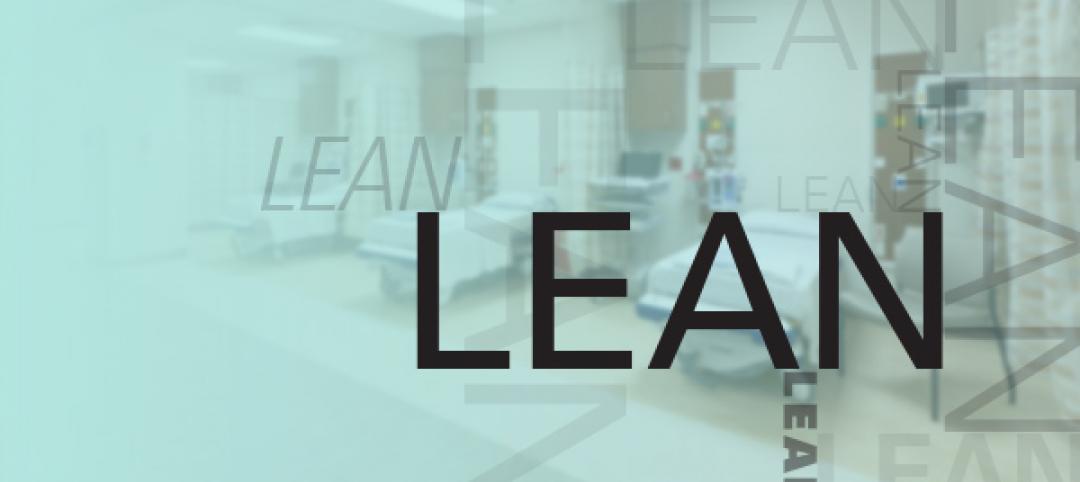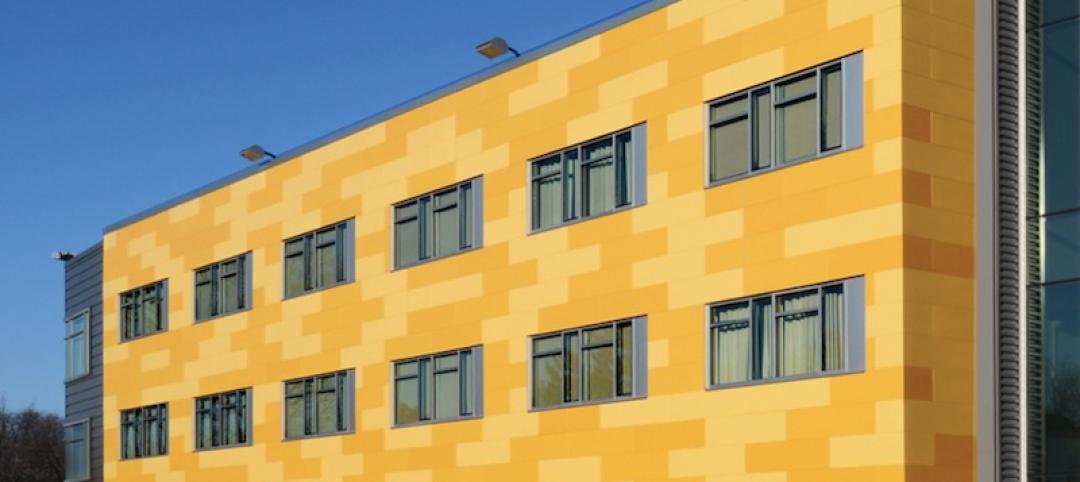In 2012, the architectural firm Page Southerland Page did pro bono programming work for Healthcare for the Homeless Houston (HHH), a nonprofit organization that provides long-term care for that city’s homeless men, women, and children.
At the time, HHH—which was founded in 1999 and is part of a national organization with more than 150 health centers—was operating out of a shoebox, a 6,425-sf building it shared with another homeless services group. The programming was conducted with an eye toward assisting HHH in its strategy to relocate and expand.
“They knew they had to leave that building,” recalls Kurt Neubek, FAIA, Principal with Page’s Houston office.
The organization found a three-story, 24,250-sf building that had been a Merchant Marine hall known as the Seafarer’s Union, which HHH selected in part for its proximity to St. Joseph Hospital, which handles many homeless patients.
“Our goal was to design the clinic around our clinical model,” which is the integration of primary care, behavioral care, and consultation and case management services, explains Frances Isbell, M.A., HHH’s chief executive officer. “We also didn’t want it to look like a bus station.”
Last February, HHH celebrated its first anniversary in its new, larger digs, whose extensive renovation presented a number of challenges to a Building Team that included Page (architect and MEP engineer), WSP (co-consultant), ASA Daily (SE), H2B Engineers (CE), Forney Construction (CE), FMG Design (signage and graphics), and TechKnowledge (A/V, IT, Security).
For one thing, each floorplate is only 8,000 sf. Half of the first floor was taken up by indoor parking. And the third floor was a giant open meeting room.
The first thing that Page did, says Neubek, was to move the front door to the short side of the building, partly to dissuade the homeless from congregating at a nearby restaurant. Page also relocated the parking garage to the back of the first floor, which freed up a bit more administrative space.
The second floor includes the main reception desk and the medical clinic with 12 exam rooms, an in-house pharmacy, and small testing labs. The design of this floor is a flexible module so offices can be converted to exam rooms if needed, and vice versa.
The third floor has six dental stations—dental care being HHH’s most sought-after service, says Isbell—and behavioral health spaces and offices with glass sidelights that allow more daylight to come onto the floor. The third floor includes workstations, training areas, and lockers for HHH’s 400 annual volunteers.

A “grand staircase” between waiting rooms ties together the floors of this facility. Vinyl plank flooring was selected for its durability and sense of warmth. Image: Slyworks Photography/Courtesy of Page.
Before construction, exam rooms were mocked up to allow physicians and attending staff to determine if counter and cabinet heights and spaces between equipment were positioned properly. Patient rooms were also oriented toward the back of the building, which provides the staff with a higher measure of safety in the event that patient behavior becomes problematic.
Other design accommodations include an open staircase between waiting areas that ties the floors together, more exterior coverage over the reclad entryway with a new exterior lantern, a new elevator, and larger energy efficiency windows. The second floor clinic offers patients electrical outlets where they can recharge the mobile devices. Translucent partitions between the dental stations and waiting rooms offer privacy while still letting light permeate the building.
One of the more noticeable features of the new building is its flooring. Isbell says that it had to be durable, “as people living on the street are bringing all of their worldly possessions in with them.” HHH also wanted the interior design to provide a sense of warmth. So 2,232 sf of the second and third floors and stairwell are covered with Parterre’s ingrained natural oak luxury vinyl planks.

Dental care is the most sought-after service at Healthcare for the Homeless Houston's new facility, which has six dental stations bookended by translucent partitions. Image: Slyworks Photography/Courtesy of Page.
The whole project cost about $8.5 million, which HHH financed through a combination of state and private foundation grants. Neubek says TechKnowledge donated all of its services, and most of the ceiling tile and lighting used for the renovation were donated, too.
Isbell says that moving into the new center is a benchmark for this organization, which operates two other facilities in Houston. Most important, it allows the organization to see more patients daily. (The three centers average about 100 per day.) But, she laughs, “if it ever happens again, I’ll retire. It was a lot of work.”
Related Stories
| Nov 8, 2013
Oversized healthcare: How did we get here and how do we right-size?
Healthcare facilities, especially our nation's hospitals, have steadily become larger over the past couple of decades. The growth has occurred despite stabilization, and in some markets, a decline in inpatient utilization.
| Nov 1, 2013
CBRE Group enhances healthcare platform with acquisition of KLMK Group
CBRE Group, Inc. (NYSE:CBG) today announced that it has acquired KLMK Group, a leading provider of facility consulting, project advisory and facility activation solutions to the healthcare industry.
| Oct 30, 2013
15 stellar historic preservation, adaptive reuse, and renovation projects
The winners of the 2013 Reconstruction Awards showcase the best work of distinguished Building Teams, encompassing historic preservation, adaptive reuse, and renovations and additions.
| Oct 30, 2013
11 hot BIM/VDC topics for 2013
If you like to geek out on building information modeling and virtual design and construction, you should enjoy this overview of the top BIM/VDC topics.
| Oct 28, 2013
Urban growth doesn’t have to destroy nature—it can work with it
Our collective desire to live in cities has never been stronger. According to the World Health Organization, 60% of the world’s population will live in a city by 2030. As urban populations swell, what people demand from their cities is evolving.
| Oct 18, 2013
Meet the winners of BD+C's $5,000 Vision U40 Competition
Fifteen teams competed last week in the first annual Vision U40 Competition at BD+C's Under 40 Leadership Summit in San Francisco. Here are the five winning teams, including the $3,000 grand prize honorees.
| Oct 18, 2013
Researchers discover tension-fusing properties of metal
When a group of MIT researchers recently discovered that stress can cause metal alloy to fuse rather than break apart, they assumed it must be a mistake. It wasn't. The surprising finding could lead to self-healing materials that repair early damage before it has a chance to spread.
| Oct 14, 2013
The next level of Lean process for healthcare
Most hospitals have begun the Lean process improvement stage to eliminate waste, reduce travel distances, and minimize inventory, with varying levels of success. Here are three keys to creating a prosperous Lean program.
| Sep 24, 2013
8 grand green roofs (and walls)
A dramatic interior green wall at Drexel University and a massive, 4.4-acre vegetated roof at the Kauffman Performing Arts Center in Kansas City are among the projects honored in the 2013 Green Roof and Wall Awards of Excellence.
Sponsored | | Sep 23, 2013
Nichiha USA panels provide cost savings for community project
When tasked with the design and development of a newly constructed Gateway Rehabilitation Center, architects at Rothschild Doyno Collaborative first designed the new center to include metal panels. When the numbers came back, they were challenged with finding a product that would help cut costs and keep them within the construction budget. Nichiha’s fiber cement panels come in a half or less of the metal panel cost.

















